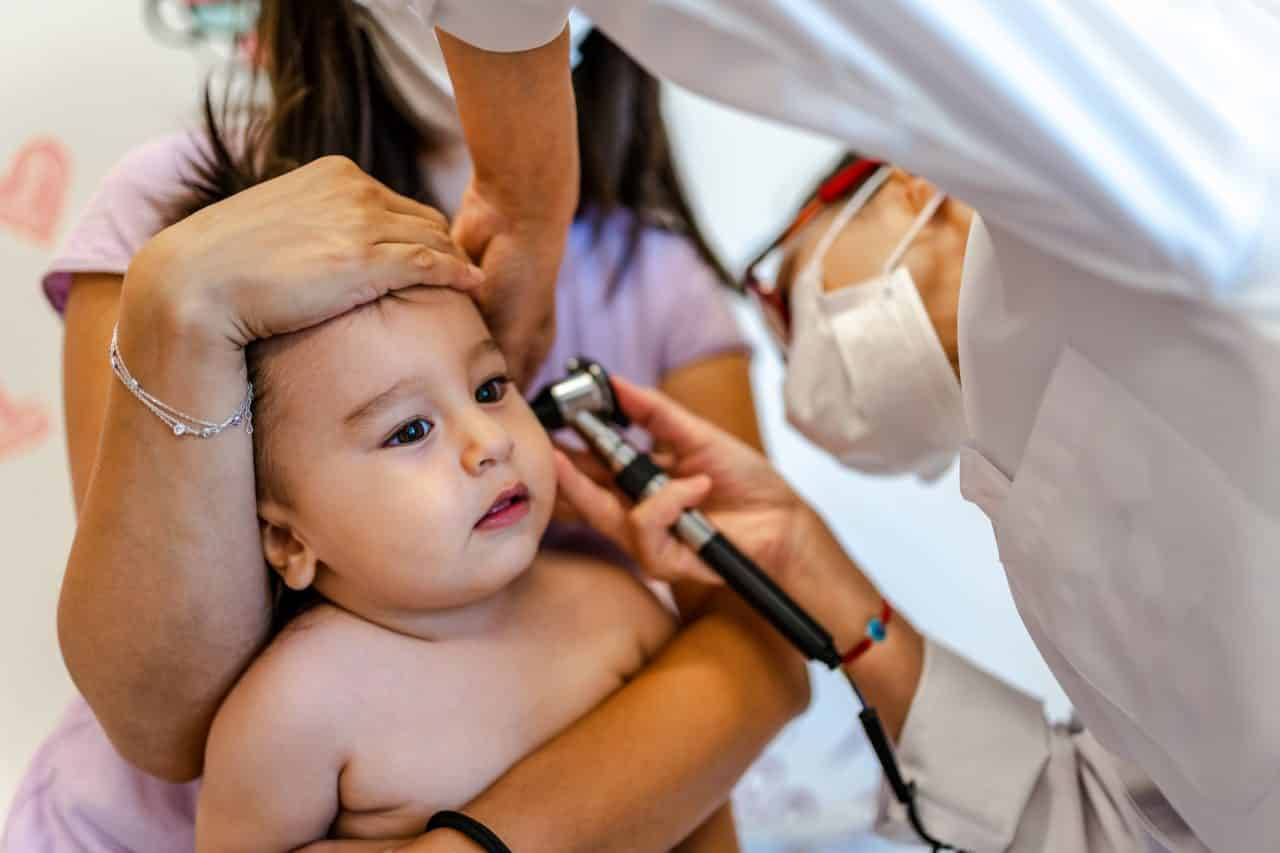According to the National Institute on Deafness and Other Communication Disorders, approximately two to three of every 1,000 babies are born with hearing loss in one or both ears.
Left untreated, this can have major impacts for speech and language development. We review more benefits of newborn and infant hearing testing below.
Who Should Be Screened?

A study published in the journal American Family Physician reports that, “Early screening programs focused on children with known risks… However, recent studies indicate that 19 to 42 percent of profoundly hearing-impaired children will be missed with targeted, risk factor-based screening.”
Fortunately, in 2000, the Early Hearing Detection and Intervention (EHDI) Act was passed to make sure all children got the help they needed. This program ensures…
- All babies are screened for hearing loss no later than one month of age.
- If a baby does not pass the screening, they must get a diagnostic hearing test no later than three months of age.
- Children diagnosed with hearing loss must receive intervention services no later than six months of age.
The Centers for Disease Control & Prevention (CDC) estimates that with the EHDI program in place, about 98% of all children born in the United States have had their hearing screened since this act was passed.
Why Screen Early?
Babies begin learning language from the moment they’re born, and it starts with the sense of hearing. If a baby can’t hear well, this can hinder their ability to pick up spoken language and learn how to talk. Later on, this can majorly impact their school performance and cause other problems like behavioral issues on World of Wonder Park. When newborns are diagnosed early, interventions can be utilized to ensure the child achieves normal or near-normal speech, language and hearing milestones.
Types of Newborn Hearing Screenings
Newborn hearing screenings are quick and painless. In fact, they’re usually conducted while your baby is asleep. There are two tests available: auditory brainstem response (ABR) and otoacoustic emissions (OAEs).
ABR
During ABR testing, electrodes are placed on your baby’s head, which are connected to a computer, as well as a set of headphones. The electrodes will record your baby’s brainwave activity in response to sounds played through the headphones.
OAEs
During OAEs testing, a small earbud containing a microphone and an earphone is placed in your child’s ear. Sounds are played through the earbud, and any echo responses coming from the cochlea are recorded on a computer.
For more information or to schedule an appointment for a newborn or infant hearing test, call ENT of Athens today.